Deep Blue Sea: Winning Underwater Photographs
Hairy Hello

This was the final shot photographer Sejung Jang captured on a dive near Anilao, Philippines, before his camera stopped working. Luckily, he wrote, he got a nice shot out of it — and a first-place award in the compact macro category of Ocean Art 2018. The subject is a red hairy shrimp.
Cannibal Crab
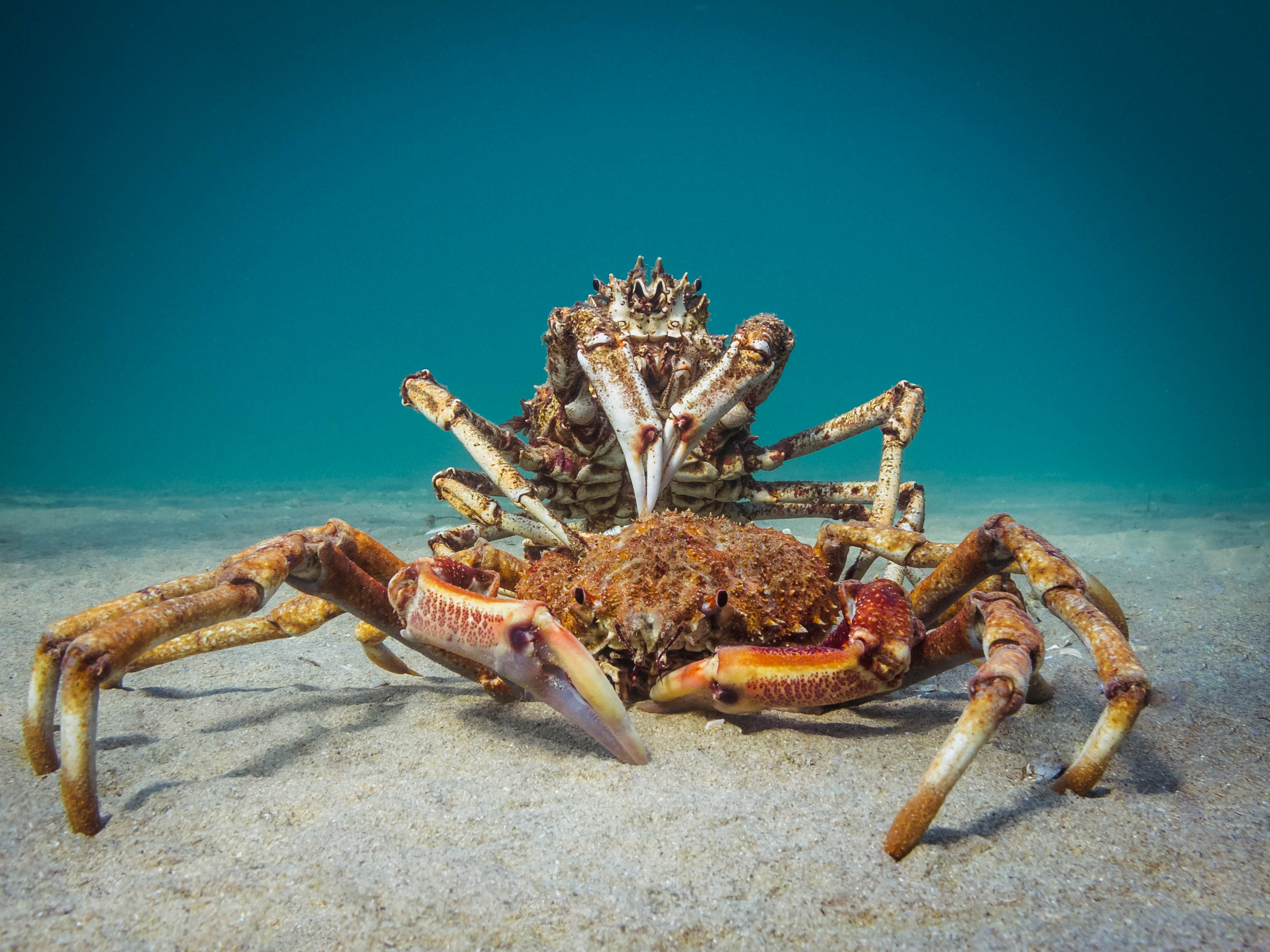
A spider crab commits cannibalism in this stark shot from Australian photographer PT Hirschfield. Hirschfield took the image near Victoria during the molting season, in which spider crabs gather to find safety in numbers as they shed their shells and await the hardening of their new carapaces. But often, spider crabs are their own worst enemies. Hirschfield stumbled upon such a scene of crab-on-crab crime while diving, discovering one spider crab eating another alive.
"Between bites, the Cannibal Crab and its hapless victim stared back into my lens — one seeming defiant but justified by its need to feed, the other in all the resigned pathos of the final miserable moments of its life," Hirschfield wrote.
Heavy stuff, but the resulting shot won Hirschfield the first prize in the compact behavior category of Ocean Art 2018.
Nudibranch Art

The Underwater Art category of the Ocean Art competition rewards photos that have been set up or manipulated. The first-place winner, "Disco Nudi," by Bruno Van Saen, evokes a psychedelic effect by justaposing a Hypselodoris bullock nudibranch against a swirling background.
Mangrove Magic
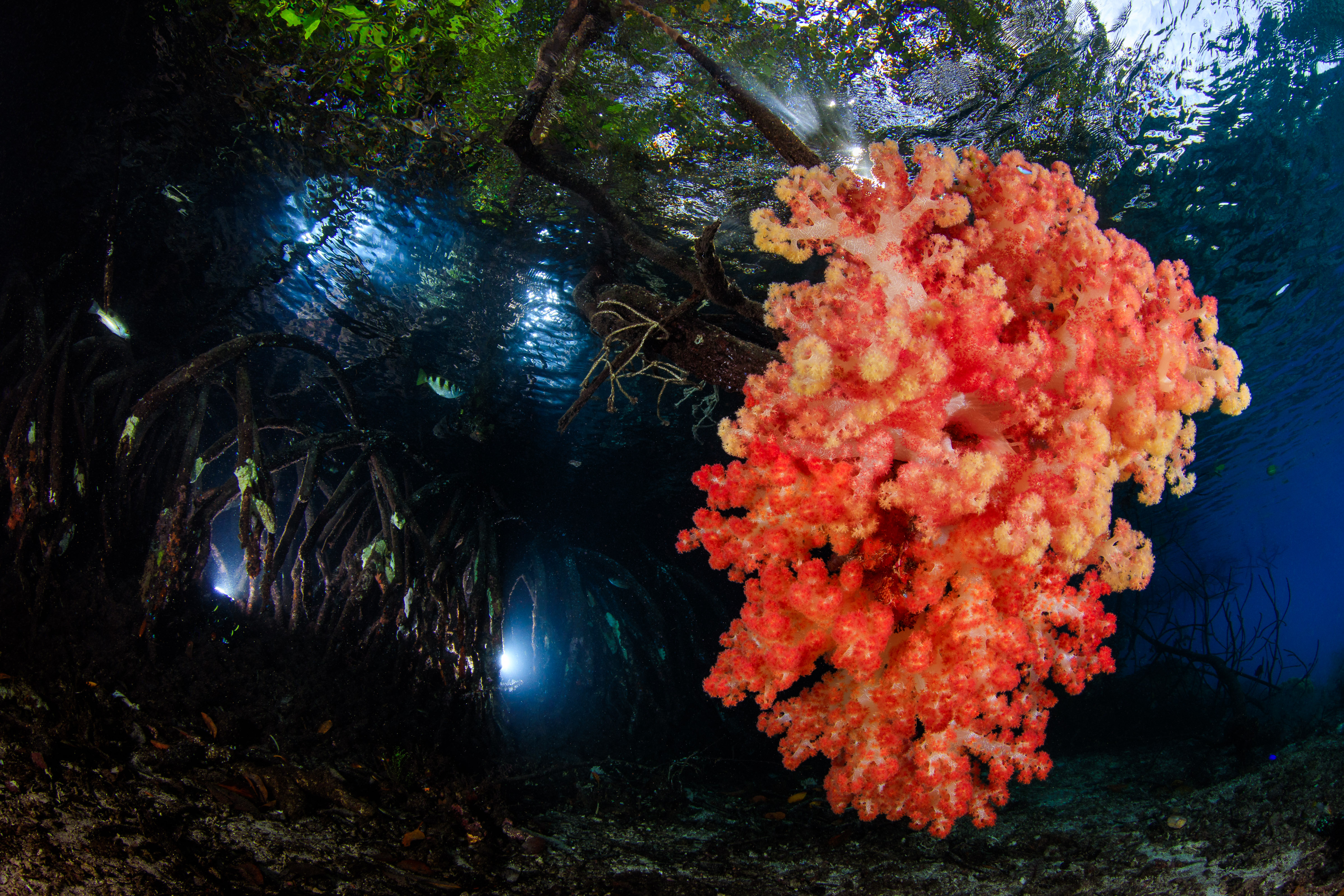
The first prize winner in Ocean Art 2018's reefscape category is not your typical Great Barrier Reef shot. Instead, it depicts a mangrove ecosystem off Raja Ampat, Indonesia, where a brilliant red soft coral grows amidst woody roots. The photo was taken by Yen-Yi Lee of Taipei, Taiwan, who used two remote strobes to illuminate the background and the surface of the water.
Prehistoric Beast
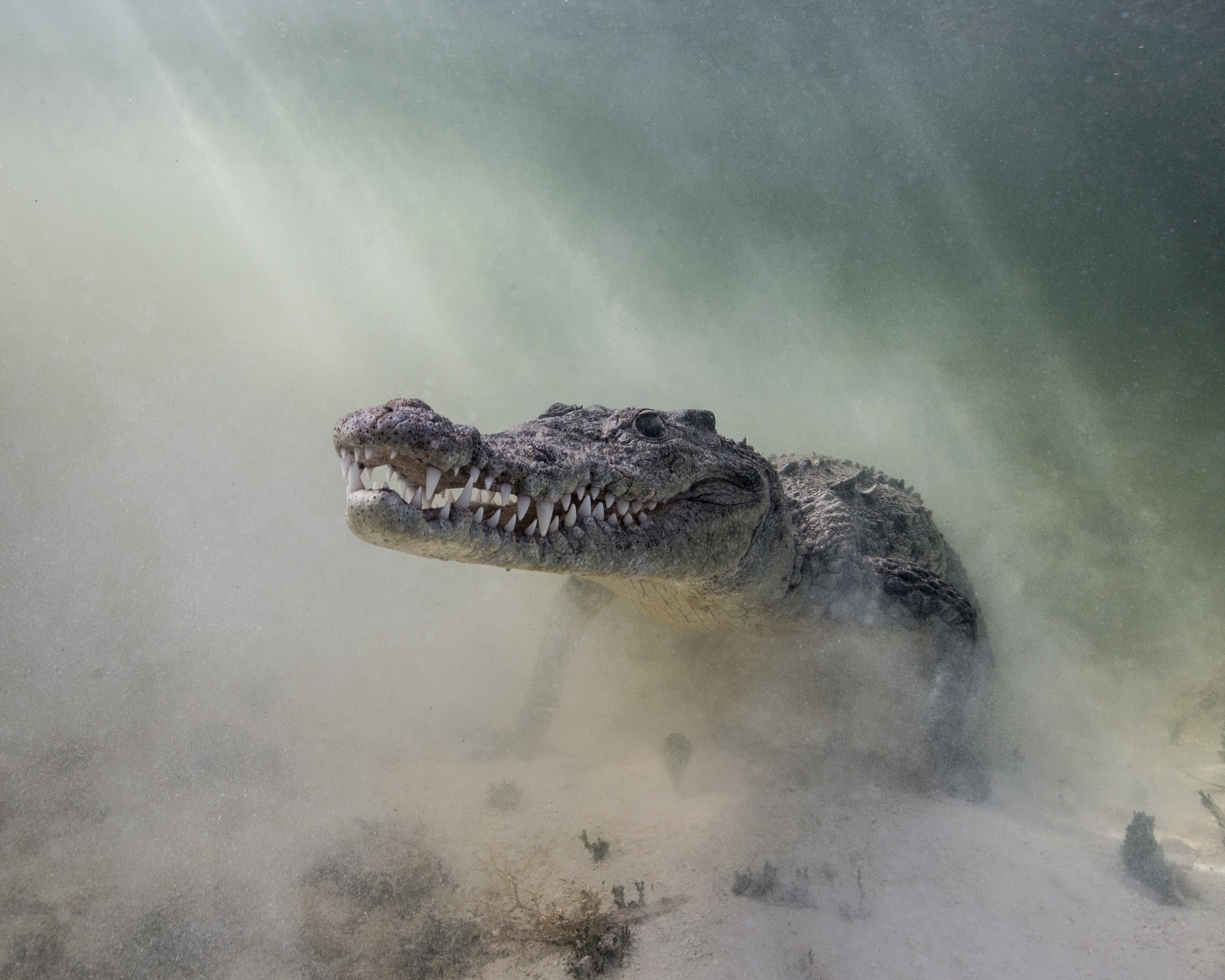
Christina Barringer not only won second place in the portrait category for this striking shot, she saved her dive partner from a snappy attack. According to the description submitted with the photo entry, Barringer was diving near Banco Chinchorro, when this young croc charged toward her dive partner. She lunged between the two, intending to use her camera as a shield – and snapped this stunning photo.
Get the world’s most fascinating discoveries delivered straight to your inbox.
Underwater Grazer
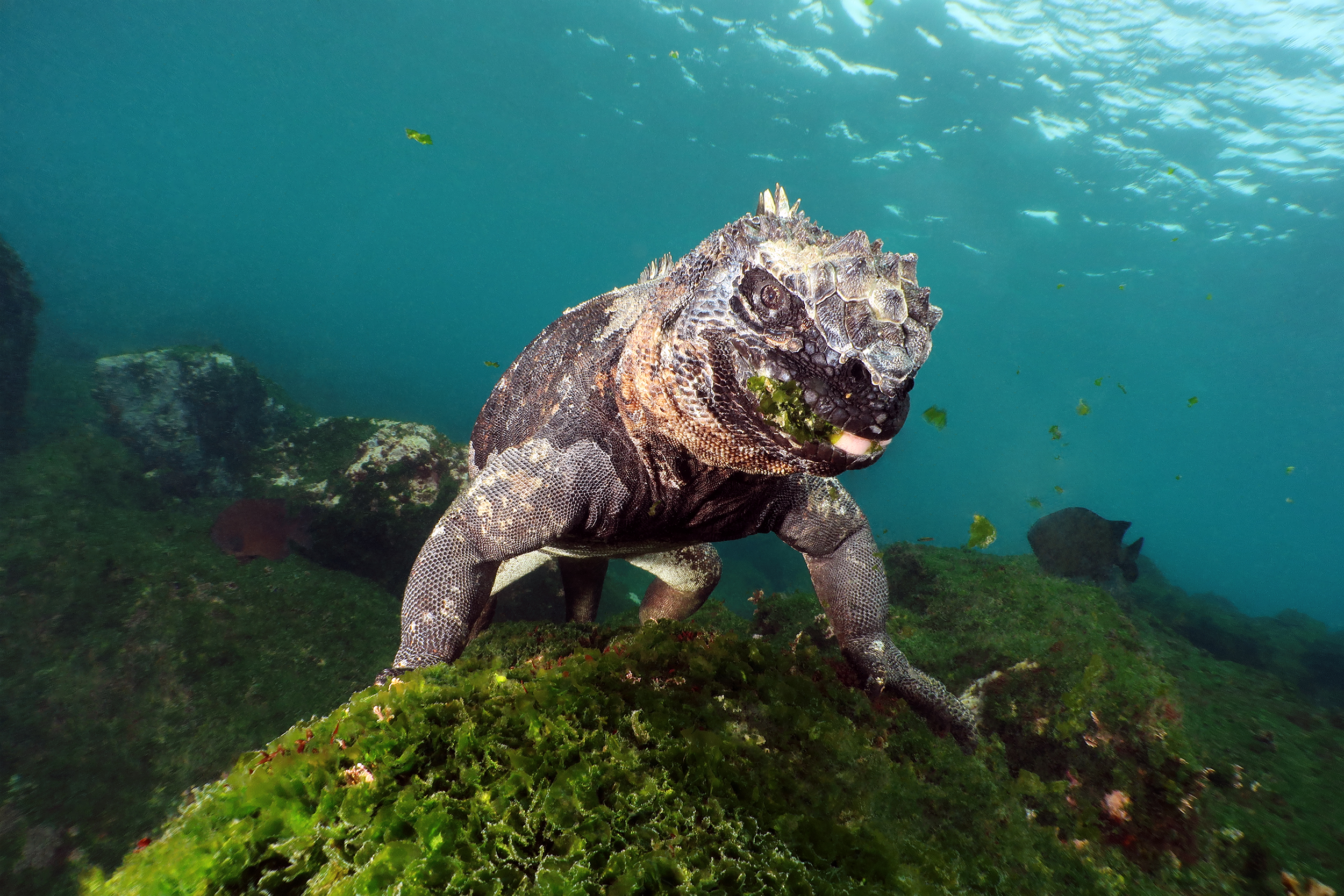
What is an iguana doing underwater? Having a snack. The Galápagos Islands are home to marine iguanas, which do their feeding under the sea. The rocky shores where the iguanas feed are rough, with strong surges of current. That made it challenging to hang on to the camera and to position lighting, according to photographer Andreas Schmid. This particular iguana was unconcerned with the nearby photographer, Schmid wrote in his photo description, allowing Schmid to capture a series of wild images. The photo took fourth place in the compact wide-angle category.
Frills upon frills
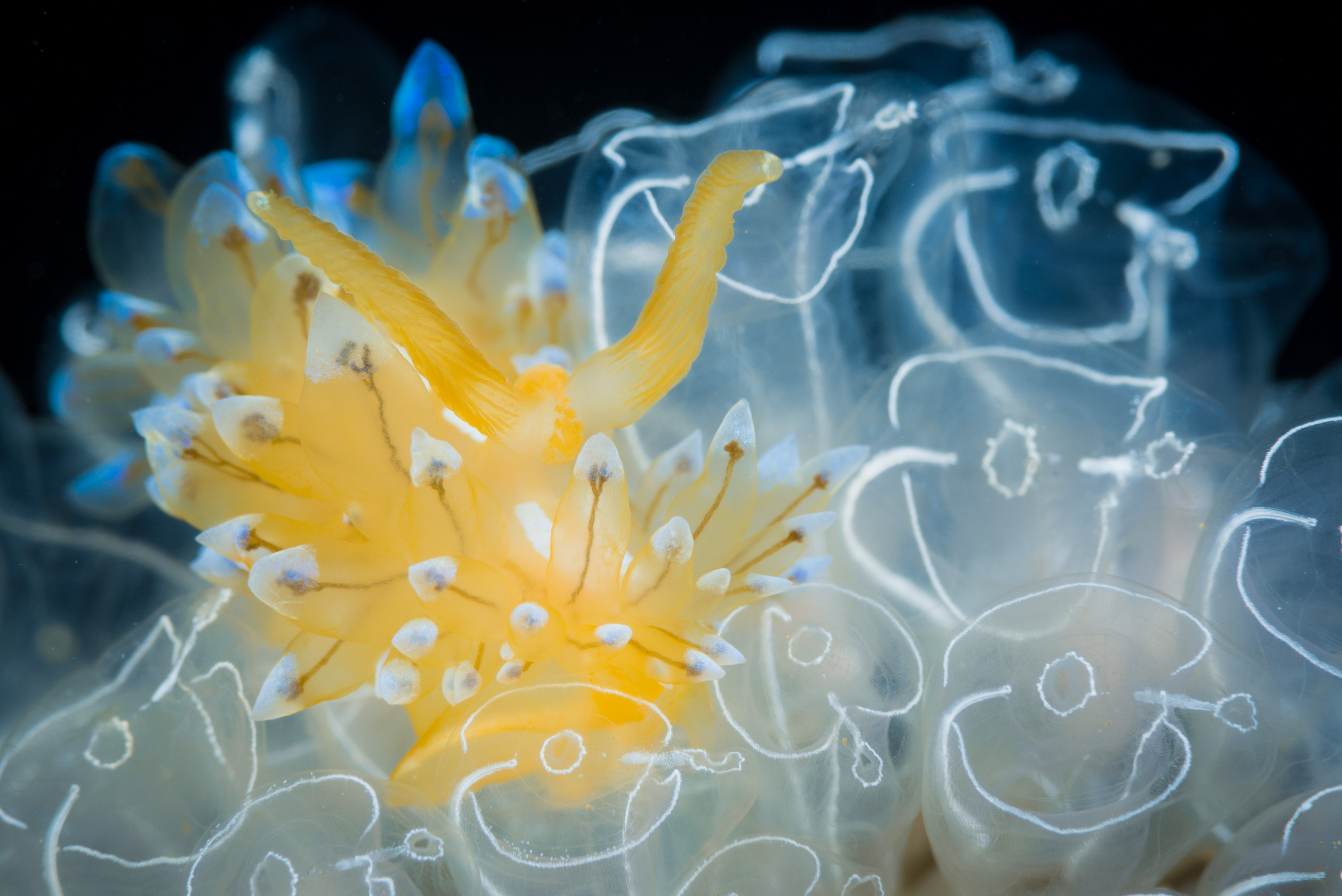
The crested aeolis nudibranch (Janolus cristatus) is found off the coast of western Europe and in the western Mediterranean, including near Taranto, Italy, where this photograph was taken. It took fourth place in the nudibranch category of the Ocean Art 2018 competition. Photographer Giacomo Giovannini wrote in his photo entry that the dive spot is "forgotten and mistreated," but home to brilliantly colored nudibranchs, as well as crabs, feathery marine worms and sea horses.
"Sometimes you're unable to take pictures because there are too many incredible critters to admire," he wrote.
Burst of light

Light bursting through a bundle of kelp with columns of the seaweed to the side frame a beautiful instant in Monterey Bay, California. Photographer Tyler Schiffman framed the shot and waited several moments for a sea lion to wander into it. One finally did, he wrote in his photo description, and then vanished as quickly as it came: Schiffman got off only three shots, including this one. It took second place in the cold water category of Ocean Art 2018.
Above and Below

A quartet of stand-up paddleboarders is silhouetted against the sunset in this wide-angle image at a shallow reef in Ha'apai, Tonga. Photographer Grant Thomas took the photo to demonstrate the innate bonds between people and the ocean. He won second-place in the wide angle category of the 2018 Ocean Art competition.
"Our inherent relationship with the ocean is eternal, and we must care for it in a way that ensures sustainability for the future," Thomas wrote.

Stephanie Pappas is a contributing writer for Live Science, covering topics ranging from geoscience to archaeology to the human brain and behavior. She was previously a senior writer for Live Science but is now a freelancer based in Denver, Colorado, and regularly contributes to Scientific American and The Monitor, the monthly magazine of the American Psychological Association. Stephanie received a bachelor's degree in psychology from the University of South Carolina and a graduate certificate in science communication from the University of California, Santa Cruz.
 Live Science Plus
Live Science Plus





